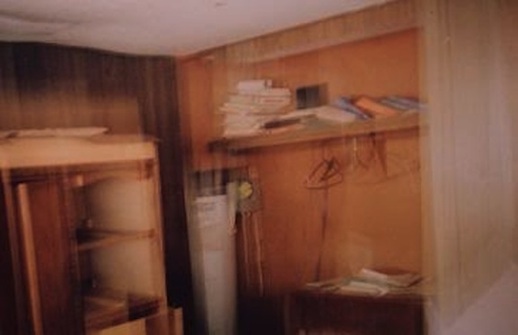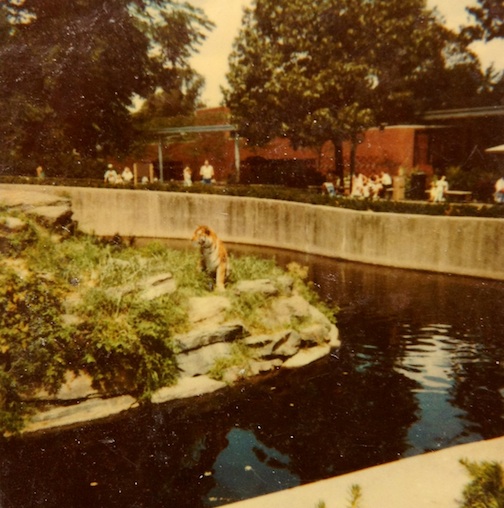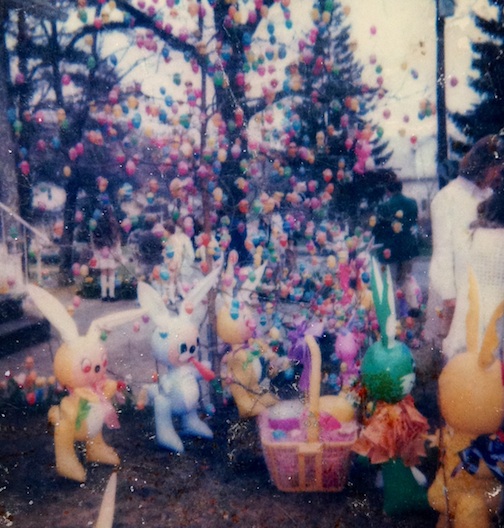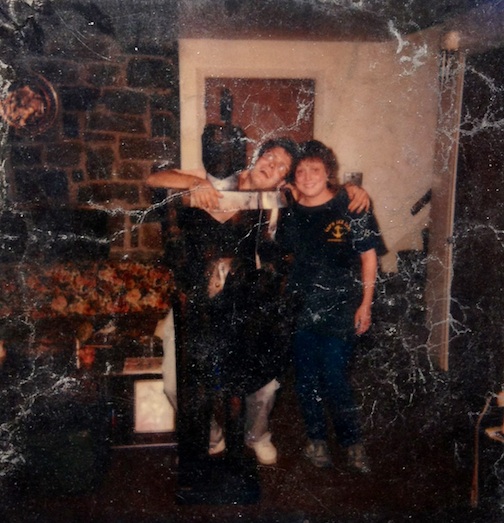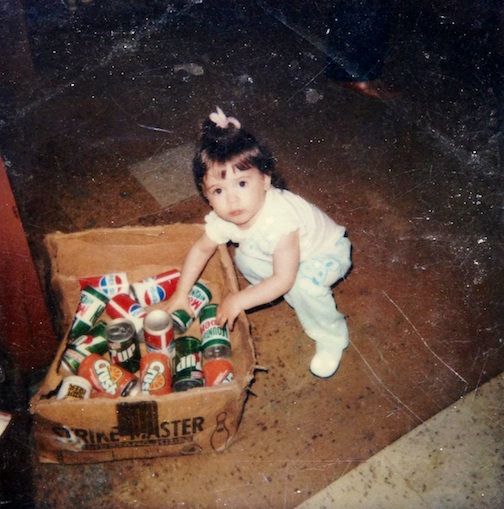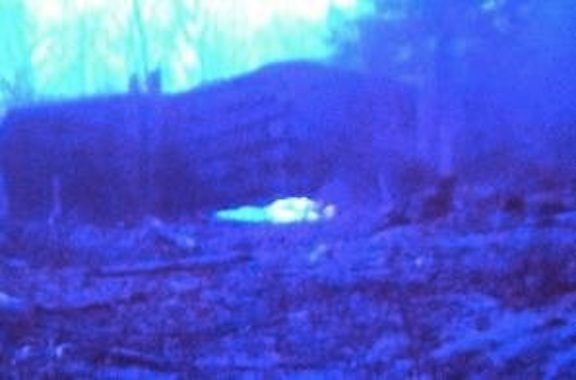The trailer
Discovery
In 2004 I discovered an abandoned trailer several miles from my home in Pennsylvania. It was located in a clearing in the middle of the woods, beside a dirt road which looped from the highway and back. Inside, everything was left as though the family had fled suddenly: clothes in the closet, books on the shelf, dishes in the sink, etc.
Gathering materials
Nothing I found in the trailer post-dated 1984. I collected calendars, check books, utensils, photographs, magazines. I also collected clothing, including a pair of jeans, and I kept a box of polaroids I found under the bed. A polaroid of the kitchen matched a similar one I took of the same room after it had been destroyed.
I also collected business and financial records. A book of index cards indicates that Joseph, the husband, was a contractor and that Catherine, his wife, worked as his secretary. She kept track of potential clients, their locations, and plans to build.
Personal decoy
I built a dummy and brought it with me during visits. Sometimes I photographed it in the space. Other times it served as a false sense of companionship and protection.
Warning sign
One day I found a 357 Magnum bullet laying in the center of the doorstep. I was scared and stopped visiting for a while, but I saved the bullet and fantasized about who left it, when, and why. I decided the act was deliberate.
Every time I visited I parked my car in a small opening to what appeared to be a driveway. There was a large, swinging metal gate which was always closed and locked, surrounded by "No Trespassing" sings. I never followed the drive into the woods, where its destination remained unknown. Since the beginning I felt the driveway had direct connection to the fate of the trailer. The introduction of physical evidence was important because it was the first time I found new material on premises.
Every time I visited I parked my car in a small opening to what appeared to be a driveway. There was a large, swinging metal gate which was always closed and locked, surrounded by "No Trespassing" sings. I never followed the drive into the woods, where its destination remained unknown. Since the beginning I felt the driveway had direct connection to the fate of the trailer. The introduction of physical evidence was important because it was the first time I found new material on premises.
Deconstruction
Several months passed before I re-visited the area. I sensed more than ever the driveway was linked to the trailer, and more critically, to the strategic placement of the bullet.
I arrived at an empty lot. The trailer had been torn down. Nothing remained except debris. Despite a sense of loss, the timing of its destruction was exhilarating, surreal, eerily meaningful. The event created an opening, a platform for new investigation. It also seemed like proof that someone was trying to eliminate my presence, or to destroy the chance I might uncover something unforgiving.
I arrived at an empty lot. The trailer had been torn down. Nothing remained except debris. Despite a sense of loss, the timing of its destruction was exhilarating, surreal, eerily meaningful. The event created an opening, a platform for new investigation. It also seemed like proof that someone was trying to eliminate my presence, or to destroy the chance I might uncover something unforgiving.
Upheaval
I had the urge to dig on premises. It was a rainy day and I worked with a shovel along the incline of the clearing. In boots and a long black coat I persisted, becoming exhausted.
The digging became a symbolic act. It put into action the question "is something or somebody buried here?" and actualized my need to break something open. It became an impulsive way to get closer to the remains of an event. I reached the crest of the clearing and through an opening deep in the woods I saw a small cabin with a lawn chair sitting in front, facing me, right where the driveway from the dirt road would have led.
The digging became a symbolic act. It put into action the question "is something or somebody buried here?" and actualized my need to break something open. It became an impulsive way to get closer to the remains of an event. I reached the crest of the clearing and through an opening deep in the woods I saw a small cabin with a lawn chair sitting in front, facing me, right where the driveway from the dirt road would have led.
Blurring lines
After spotting the cabin I ran to the car. When I returned home I asked a friend to photograph me in the front yard with my shovel. Through a repetitive act of self-forgetfulness, I was transformed, harboring the impact of the remembered and the imagined. The reality of the cabin pierced this illusion, making me aware of it at the same time. Perhaps the empty lawn chair which faced the clearing was more frightening than the cabin itself.
"Such accounts displace the dualism of 'objective' and 'subjective' views with the haunting double vision of a subject who is simultaneously in a world and subject to it, and yet moving through it with the power to fabulate it and give it form." -Kathleen Stewart
"Such accounts displace the dualism of 'objective' and 'subjective' views with the haunting double vision of a subject who is simultaneously in a world and subject to it, and yet moving through it with the power to fabulate it and give it form." -Kathleen Stewart
Sleep as a shield
One night later that spring I drove to the woods with a sleeping bag, flashlight, and video camera. I recorded myself sleeping through the night and into dawn. My body was invisible until the morning light revealed a distant, amorphous shape. Once it was morning I gathered my things and left.



